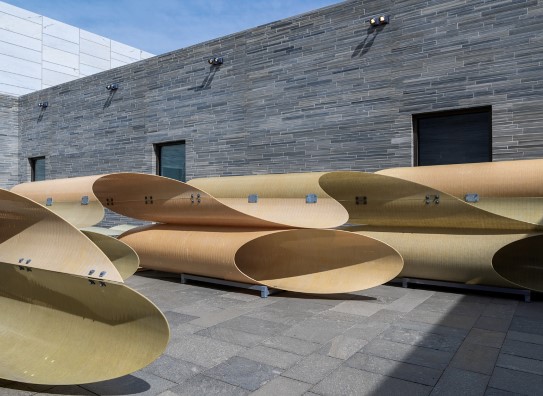Wavelengths Recomposed
Siri Aurdal
Transcription
(Sound of school bell ringing, children playing)
Narrator:
Siri Aurdal was just a child after the Second World War. Like many artists who were politically active left-wingers in the 1960s and 70s, she was committed to taking art out of the museum and bringing it to places where people lived and worked. Aurdal is best known for her wave sculptures, which she created initially as climbing frames for school playgrounds.
Eline Mugaas:
Siri Aurdal says that her sculptures are a proportionally intermediate link between people and architecture.
Narrator:
You just heard the artist Eline Mugaas. She has worked closely with Aurdal for many years, including on this work. Mugaas describes Aurdal’s project as follows:
Eline Mugaas:
She wants her sculptures to have an effect on how we move, to influence our conversations and to open up social spaces for types of conversations that may be different from those we would have had otherwise. It affects how we move around, it changes our pattern of behaviour in the space.
And she says that a very large amount of our learning takes place through our movements. So by opening up a space for movement, we also open up to another way of thinking.
Narrator:
Although Aurdal's playful work Wavelengths Recomposed is both an artwork and a climbing frame, climbing on this particular sculpture is not allowed. There is nothing to stop you playing on it in your imagination, however.